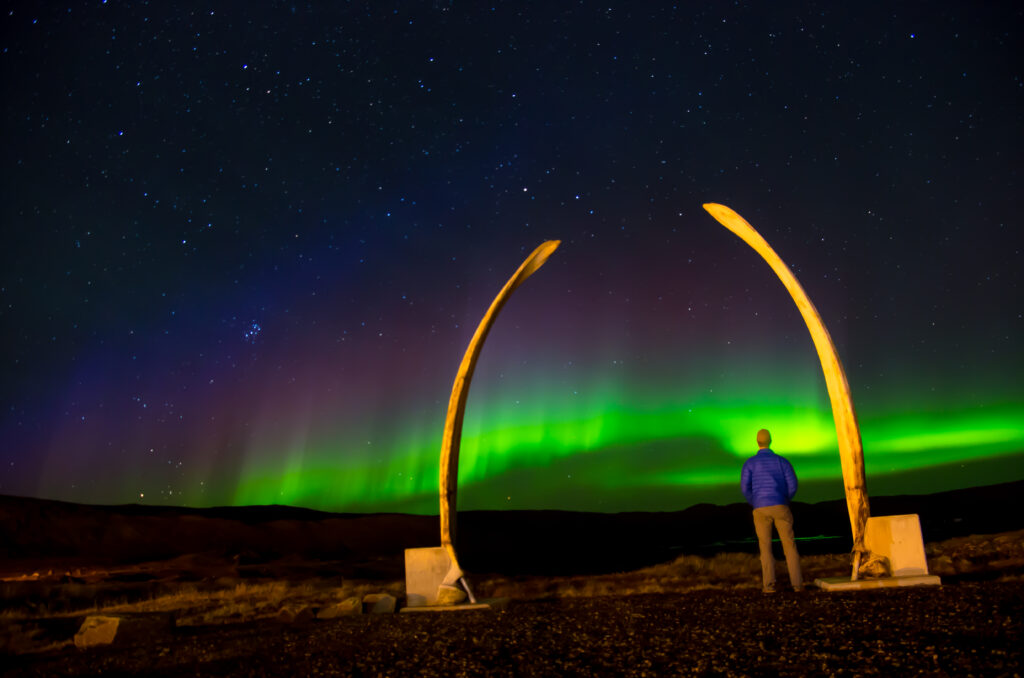One of the most enduring mysteries of the Age of Discovery, when sailors and explorers from across Europe went forth in search of new lands to discover or blank spaces on the map to chart, is the story of Sir John Franklin’s fateful expedition.
Two ships, the Erebus and the Terror would depart on an expedition of herculean scale, to once and for all, find the route through the icy labyrinth of the Northwest Passage. Led by a retired hero of the Napoleonic Wars, that had risen from the merchant class to earn a knighthood after two earlier Arctic journeys.
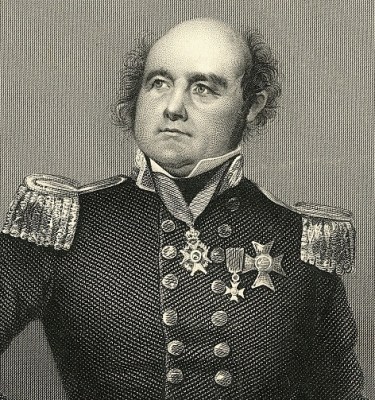
(www.wikipedia.org)
We have now learned most of what happened to the sailors in a tragic push for the mainland. Interestingly though, the search parties looking for the missing expedition would be pressed to explore the blank spots on the Arctic maps for clues into the whereabouts of the sailors. And so, we ended up learning more about the Arctic from the search parties looking for Franklin, than he would explore himself.
Franklin’s disappearance would set in motion one of the most massive search efforts in history. About 30 expeditions searched for Franklin by land and sea, and only four found any evidence. All the while, vast swathes of the unmapped parts of the Arctic were charted as they honed in on each clue and a Northwest Passage was indeed finally found along the way.
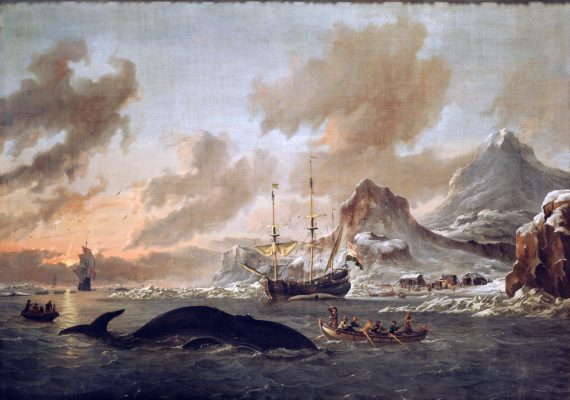
(www.pinterest.com)
Franklin Explores the Northwest Passage
It was said to be the best-equipped voyage of its kind. With provisions for 3 years, a heating system using piping to keep the 134 men warm, a steam engine powering propellers to keep them moving, an enormous library to occupy them through winters locked in ice, and dining rooms lined with porcelain, crystal and silverware to keep them civilized.
The equipment had undergone extensive research and development, making the whole endeavor seem more like Richard Branson’s trip to space than an exploration into one of the world’s last unknown spaces.
At the time of Franklin’s voyage, 1845, only about 500 km of the Northwest Passage was yet unknown. This stretch between Lancaster Sound and Alaska left Britain itching for a resolution.
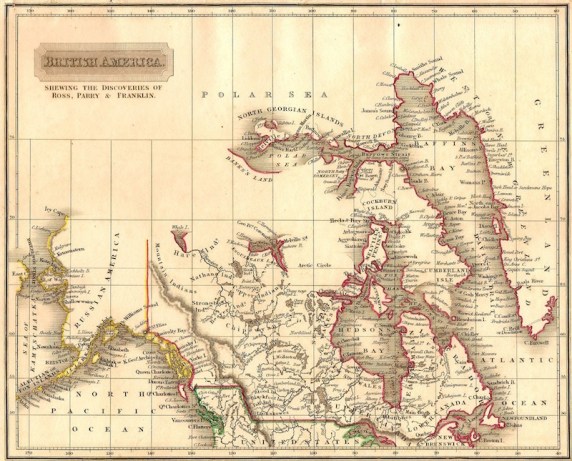
(www.inyourarea.co.uk
Franklin was tasked with discovering a route through the fabled Northwest Passage. It was a region he had already been on two earlier expeditions charting sections of the Arctic mainland, one taking him to the Coppermine River, and the other took him around the Mackenzie River.
So, when Sir Franklin was chosen to lead this mission, it seemed reassuring and on May 19th, 1845, when the ships left the Thames River everyone expected to see them soon. But as they sailed towards Lancaster Sound, no one could have guessed that the sailors on a small whaling boat in Baffin Bay, would be the last Europeans to see them.
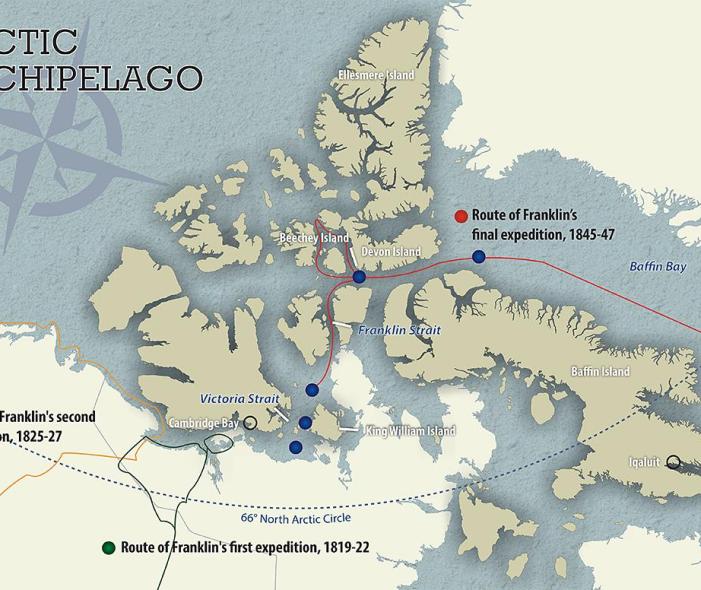
(www.canadiangeographic.ca)
What Went Wrong
The expedition started relatively well, making good time through Lancaster Sound. But they soon faced a wall of frozen sea-ice in the Barrow Strait and so they tried sailing north. Without a clear route, they settled in for winter on Beechey Island, off the southeast point of Devon Island.
During their first winter, three crew members would pass away, leaving three ominous graves that would play an enormous role in the search for the Franklin Expedition. These ominous landmarks can be visited today as a pilgrimage for many enthralled by the Franklin saga.
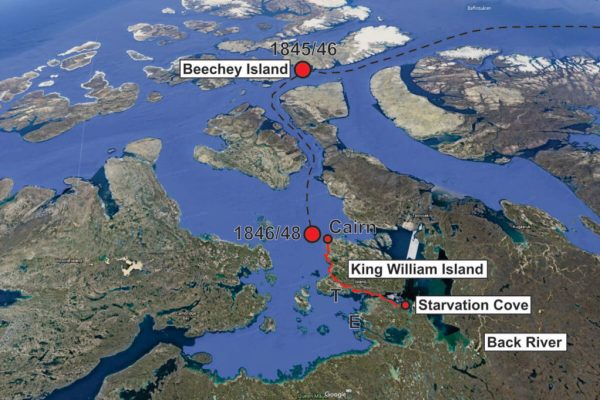
(www.secretsoftheice.com)
In the brief summer of 1846, Franklin decided to sail south. Unfortunately, this route was known for collecting enormous amounts of pack ice blown in from winds, and by September the two ships would be locked in ice off the coast of King William Island.
But the ice would never melt the next year, and the Erebus and the Terror would remain stuck in the ice through the summer of 1847. Little did they know, this would become each of their death warrants in the months to come.
Sir John Franklin passed away in June 1847, and by April 22nd, 1848, the surviving 105 men would abandon their ships to make a camp on King William Island as they prepared to travel to the mainland by foot.
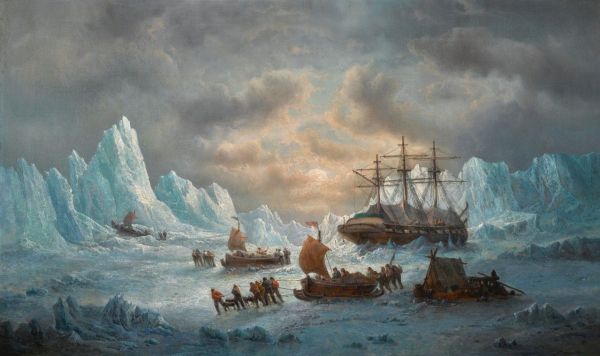
(www.pinterest.com)
This meant pulling their smaller lifeboats filled with supplies. They would trudge through blizzards and over snow mounds. None would survive the journey.
As historians look back on this fateful voyage, they can’t help but wonder what went wrong and why didn’t this well prepared trip succeed? Many have pointed to Franklin’s past missions as being un-organized and that his chevalier reliance on luck finally ran out. Science has now proven that the canned food supplies were lined with poisonous lead that filtered into their food and ensured their death through the decay of their health and mental capacities.
What we do know is the scores of monumental discoveries and new information that came from those searching for Franklin. For two decades, largely through the persistence of Franklin’s wife, Lady Jane Franklin, people continued to search for clues and fund rescue operations. There were even tales from fishermen that Lady Jane Franklin would journey to the coast of England and gaze north across the sea and “send [her] love on wings of prayer” to her long-lost husband.
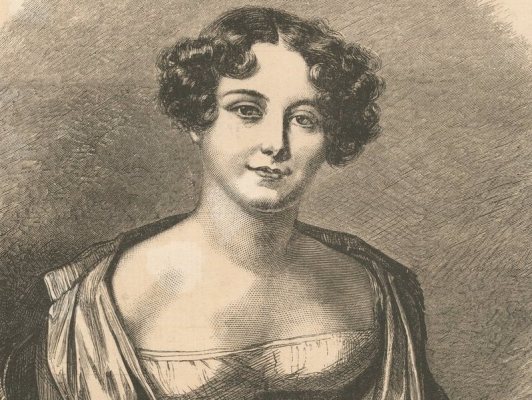
(www.atlasobscura.com)
Searching For Clues
In March of 1848, three years after Franklin’s departure, the British Admiralty sent three groups on a mission to at least learn the fate of Franklin.
To start at the western entrance of the Northwest Passage was Cpt. Kellett, from the eastern entrance, was Sir Ross and Lt. McClure, and trekking overland from the mouth of the Mackenzie River was Dr. Rae and Sir Richardson. All three trips would return without any information into the Franklin mystery.
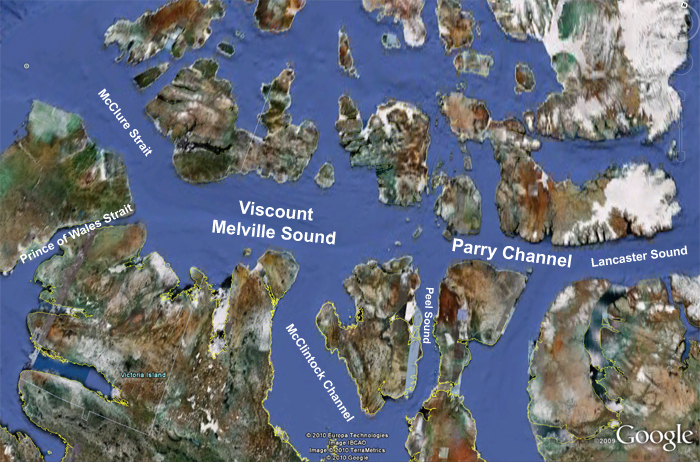
(www.neven1.typepad.com)
The closest was Sir James Clark Ross, who coming from the east, was trapped in ice within Lancaster Sound. Taking advantage of the ice, Ross took two sledges in search of Franklin’s trail. He would find himself on the right track when he turned south towards Peel Sound, the route Franklin’s ships had taken, but didn’t go far enough. Ross’s search party would return to England without realizing how close they had come.
By 1850 there was public outcry at the failure of these expeditions and so the British government offered a reward to anyone who could bring assistance to Franklin’s Expedition or conclusive information on their fate. Again, Lady Jane Franklin, through her connections and determination, was a key figure in the government acting. In fact, one newspaper stated, “What the nation would not do, a woman did,” which provided Lady Franklin overwhelming public support.
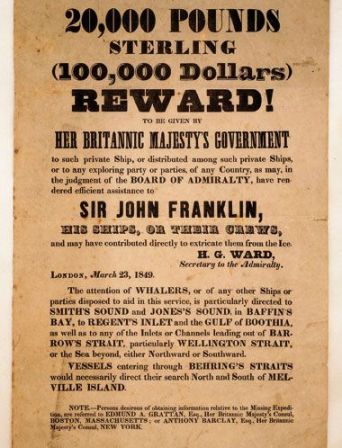
(www.aucklandcity.govt.nz)
The Fleets of the 1850s
This reward created a great buzz and a fleet of ships would sail out to comb the Arctic for any clues into the whereabouts of the lost crew.
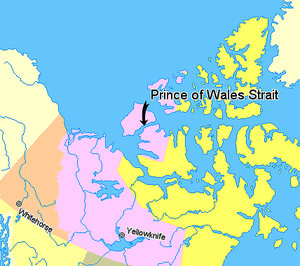
(www.wikimedia.org)
The British Admiralty sent eight ships themselves, including Robert McClure who sailed from the western entrance this time. As he passed the north coast of Alaska and entered the Northwest Passage, he soon became locked in ice within Prince of Wales Strait. They would be locked in ice until 1854 but would spend his time exploring on the ice by sledge charting and discovering new locations. He and his crew would earn the reward for discovering and charting the final 500 km of the Northwest Passage, and McClure was knighted for his success.
From the private sector, wealthy New York merchant, Henry Grinnell, would equip two expeditions to rescue Franklin leaving from Iqaluit. The Hudson’s Bay Company would fund two expeditions by land and sea to converge on Victoria Island, but there was still no sign of Franklin.
The very first clue was discovered by Cpt. Austin and Ommanney in August of 1850 when they reached Beechey Island where they found remnants of Franklin’s winter camp.
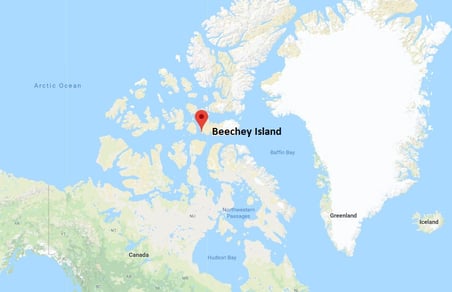
(www.arcticnorthwestpassage.com)
The crew flooded onto a cairn, a stone pile often used to bring attention and secure an important document inside, but they found nothing within the stones. Quickly, a rush of ships landed on Beechy Island looking for more signs. A hut and artifacts were found at Cape Spencer on Devon Island.
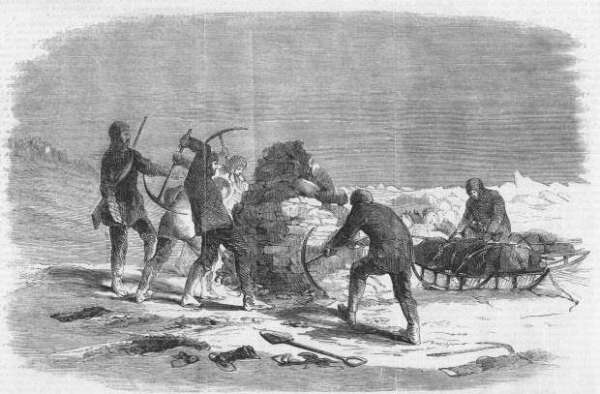
(www.o.canada.com)
Three days after the first clue came the most significant discovery. A sailor had found graves stabbed into a rocky beach. The graves read: William Braine of Erebus, died 3 April 1846; John Hartnell of Erebus, died 4 January 1846; and John Torrington of Terror, died 1 January 1846.
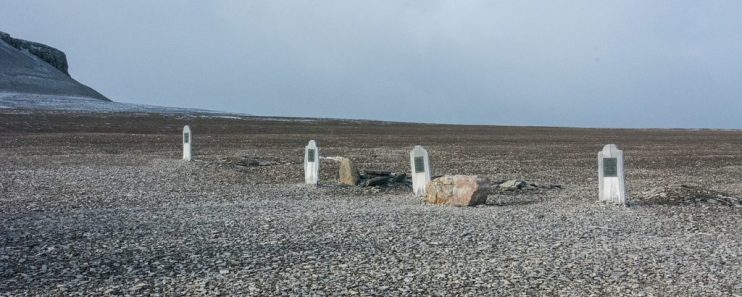
(www.secretsoftheice.com)
Rae Discovers the Story
Dr. John Rae worked for the Hudson’s Bay Company and had been exploring the Coppermine River and attempting to reach Victoria Island. On his way home with the year’s furs, he received three letters. One from the governor of the Hudson’s Bay Company, one from the Royal Navy, and one from Lady Jane Franklin. They asked him to return north and continue the search for the Franklin Expedition.
His knowledge of the area brought him to try and cross onto King William Island. The weather made the crossing impossible, but he did notice two pieces of wood that came from a European ship.
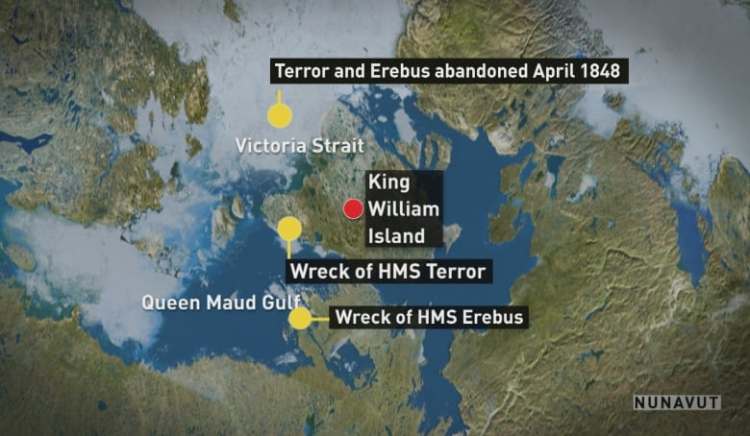
(www.cbc.ca)
He returned without any more evidence, but it was clear he was on the right trail.
In 1854, he was sent on his next expedition to the Arctic for the Hudson’s Bay Company to map the northern mainland’s coast. Near Pelly Bay, he met an Inuk man who wore a European golden cap-band and said he had come from a place where a group of men died near the mouth of a large river to the west. Rae was able to identify the river to be the Back River.
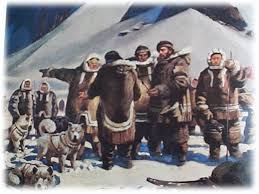
(www.dearticoantartico.com)
As he returned to Repulse Bay a group of Inuit had come to trade European items they had found. Rae gladly bought the relics of Franklin’s Expedition, including silverware engraved with “Sir John Franklin, K.C.H”. Disheartening to the Victorian sense of civility was the news that there were signs of cannibalism among the struggling men. Tragic as the news was, it was more evidence and people now knew where to search.
It seemed clear to the British Admiralty the fate of Franklin and his men. There was no longer any need for a rescue operation and their fate was known.
Lady Jane’s Last Hope
Lady Franklin’s, with faithful fortitude and determination, had acted as one of the leading investigators into the mystery of the Franklin Expedition. She had earned enormous public sympathy and had spent a fortune outfitting five ships between 1850 and 1857 while the British Navy was engaged in the Crimean War (1853-1856).
Her final hopes rested in a steam yacht she purchased and named the Fox, led by Cpt. Francis McClintock and Lt. Hobson. They landed off the coast of King William Island in the spring of 1859. McClintock led a party up the northern coast while Hobson took a party south along the coast.
McClintock’s party found a number of Inuit families with relics from the lost expedition but it was Hobson’s group that found the biggest discovery yet.
At Cape Victory on King William Island, they found a stone cairn covering a sealed tin can. Inside were messages from the Franklin crew. The only written record from the expedition.
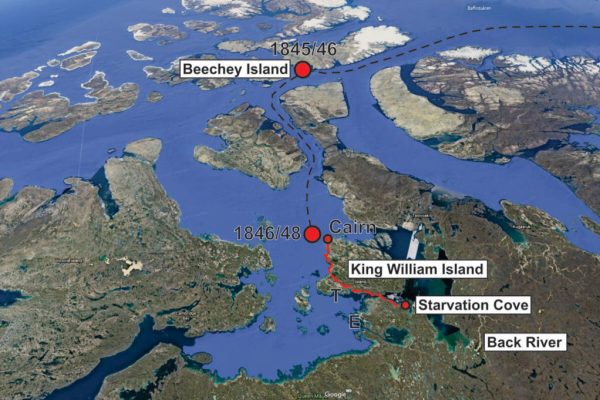
(www.secretsoftheice.com)
It stated their winter camp location of Beechey Island and the next winters off the coast of King William Island, that 24 crewmembers had died including Sir John Franklin on June 11th, 1847, and that the remaining 105 survivors would haul a lifeboat of supplies and march south.
The note showed elements of mental deterioration, probably a sign of the lead poisoning. Hobson would continue to search the western shore of King William Island, where he found the ominous sight of a lone lifeboat with the skeleton of two crewmembers and a collection of their final supplies.
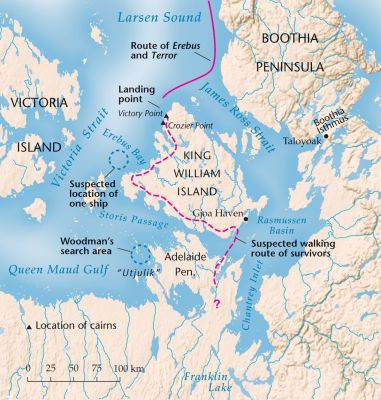
(www.pinterest.com)
This was the final clue into the Franklin mystery. Lady Franklin would have the closure of knowing the date and location of her husband’s death. Her efforts and personal financing of voyages would come to a stop and all of England grieved for Lady Franklin.
Amanda Johnson wrote, “Jane Franklin was the 19th century’s most famous widow, next only in public stature to Queen Victoria.”
What We Learned
Expeditions would continue to search for more information into the mystery. The locations of the sunken ships, the Erebus and the Terror became a global curiosity. The long-lost ships were finally found 165 years later, in 2014 and 2016.
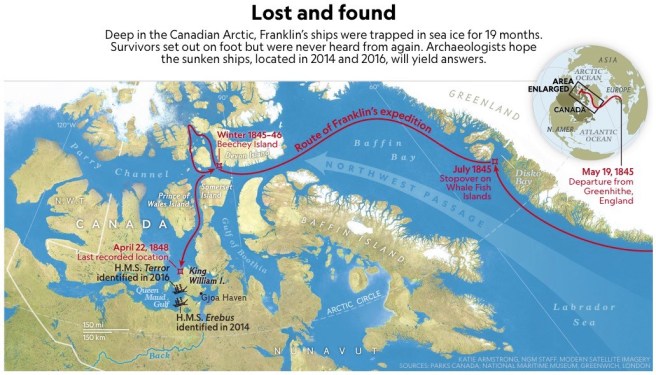
(www.geogarage.com)
It wasn’t until investigators returned to Inuit testimonies that they realized the consistencies and then using sonar technologies they began to narrow in on their final resting places. Time and again, once they were willing to listen to the Inuit, such as help from renowned oral historian Louie Kamookak, they made quick work of their discoveries. Other parties searched aimlessly but Dr. Rae relied on and asked local Inuit to gain the direction that led McClintock to get to the bottom of the story.
A testament to the accuracy and importance of the Inuit oral tradition is evident when you hear the Inuk elder Louis Ameralik tell of the final resting place of the Franklin Expedition.
We have finally learned the fateful story of Franklin’s Expedition, but along the way, search parties mapped uncharted parts of the Canadian Arctic, made a full survey of the mainland’s coast, found other routes through the Northwest Passage, and many other scientific discoveries that pushed the bounds of Victorian knowledge.
Sir John Franklin may not be known for discovering a Northwest Passage and he would never navigate it, but his name is forever connected to it. Would we have ever learned the story of the expedition if it wasn’t for Lady Jane Franklin? Without the Inuit, would they have found the evidence?
The story of Franklin is indeed the story of Arctic exploration. Few of his own discoveries make the history books but he is a vital protagonist in the story. His disappearance and Lady Franklin’s persistence may have been the catalyst that popularized the stunning icescapes of the Canadian Arctic.
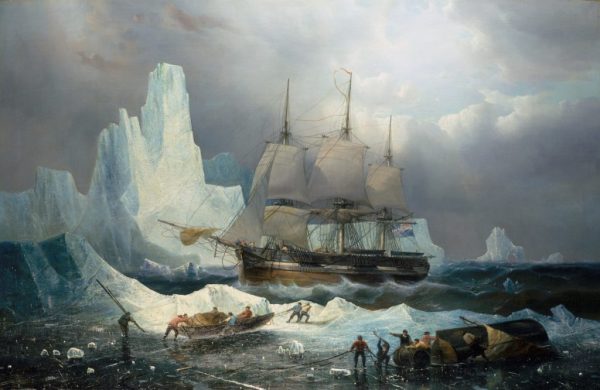
(www.pinterest.com)
Not long after Franklin, the Norweigan explorer, Roald Amundsen, would be the first to navigate the Northwest Passage entirely by sea.
Although Amundsen may go down in history for this accomplishment of traversing the passage, it was Franklin’s lost expedition that led to the exploration of the Northwest Passage. The Arctic went from an unknown space on a map to hosting a fleet of explorers visiting the least known places until they became known.
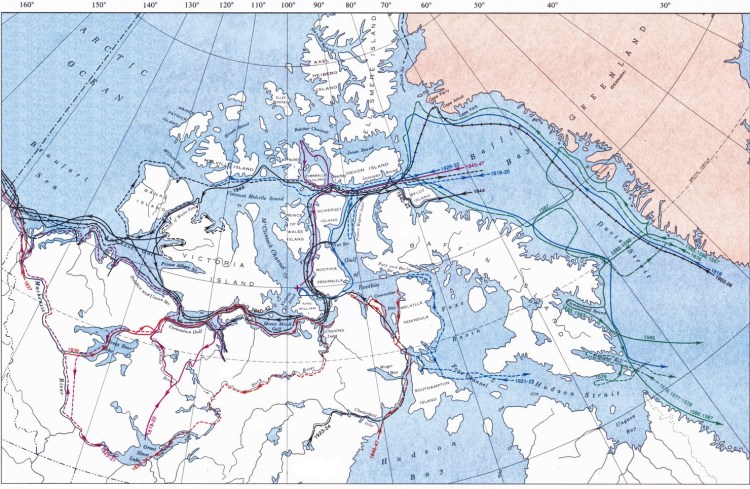
(www.canadianencyclopedia.com)
Private Customizable Trips
There are some incredible destinations in the Arctic. Are you interested in visiting historic locations as you walk in the footsteps of some of the world’s greatest explorers?
Arctic Kingdom excels at programmed wildlife safaris that take you to remarkable Arctic locations, but we also are a global leader in private customizable trips. Are you interested in designing your own journey to the Arctic? Ideas like visiting the Franklin Expedition’s graves still standing there today on Beechey Island, just within Lancaster Sound, which also is an exciting wildlife hub! Visit historic sites and explore wildlife locations for breathtaking viewing opportunities of iconic animals like polar bears and narwhal.
When it comes to Arctic journeys, if you can imagine it, we can help you make that dream come true!
For more details about Private Customizable Trips, please explore our “Plan Your Trip” page or simply click here.
To watch our webinar on Private Journeys, click here.
Experience The Arctic On A Safari
Get chances to view elusive Arctic wildlife and experience the majesty of the Arctic on safaris almost year-round. View all Arctic Safaris here.
Ready for adventure? Contact our Arctic Travel Advisors to book.
Are you still curious about the many wonders of the Arctic or looking for more interesting content then explore more blogs here!
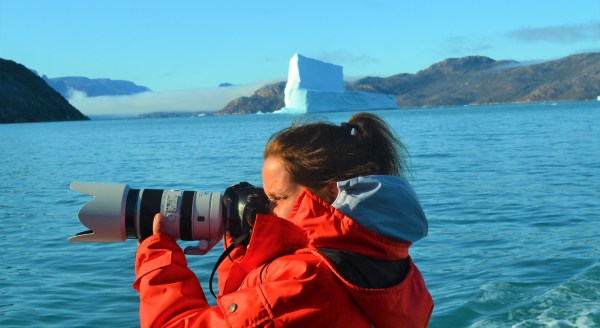
By: Mat Whitelaw


